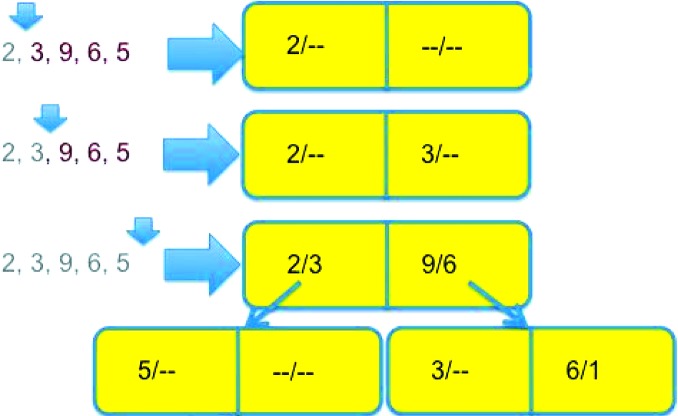Figure 6.
An example of the growth of a neartree when inserting nodes in order, with the ‘flip’ logic discussed in §8 enabled. We use the same data as in Fig. 3 ▸, but the tree grows differently because we are allowed to flip already-inserted data further down into the tree to achieve a better balance. The first two data points, 2 and 3, are first inserted as before, but when we get to 9, as before we see that 9 is closer to 3 than it is to 2, but also further from 2 than 3 is, so we replace 3 in the root node with 9 and insert 3 on the left side of a node pointed to by the right side of the root node, where 9 would have gone before. Note that the maximum distance on the right side of the root node is still 6 = |3 − 9|. The inserted 6 goes as before, because 6 is closer to 9 than it is to 2, but 5 now goes to the left branch of the root node, because 5 is closer to 2 than it is to 9.

